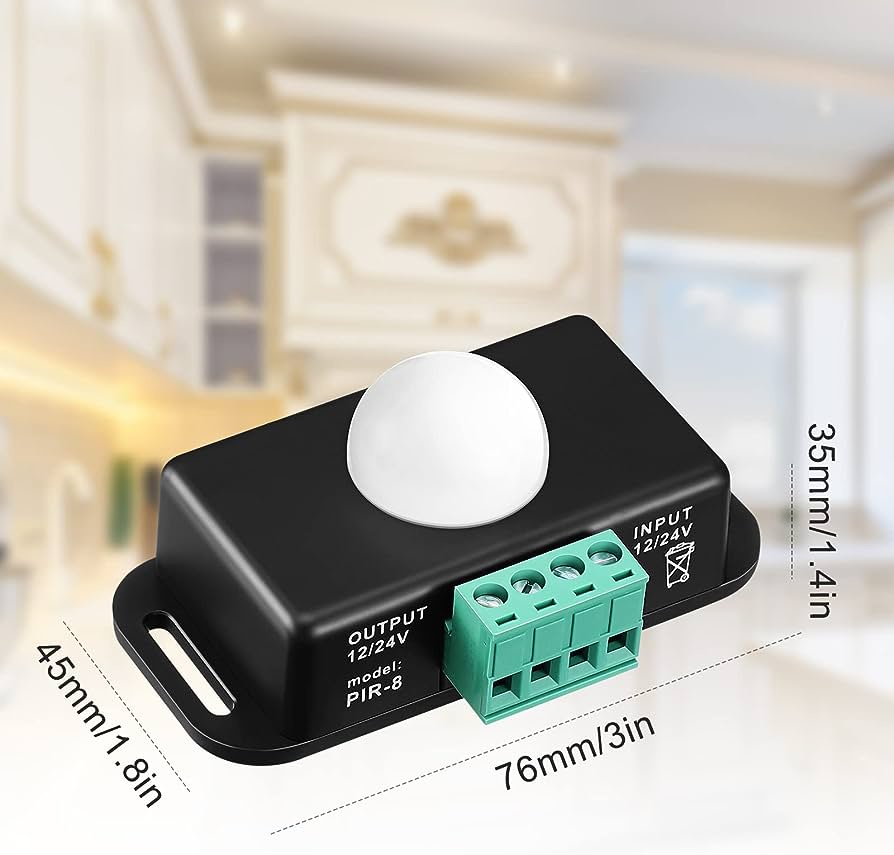Passive Infrared (PIR) motion sensors have become integral components in modern technology, finding applications in a wide range of fields, from home security systems to energy-efficient lighting. These sensors are designed to detect changes in infrared radiation within their field of view and are often used to trigger actions such as turning on lights, activating alarms, or capturing images. In this article, we will delve into the details of PIR motion sensors, exploring how they work, their applications, and recent advancements in this technology.
- Understanding PIR Motion Sensors
A PIR motion sensor is an electronic device that detects motion by measuring changes in the infrared radiation emitted by objects in its vicinity. These sensors are considered "passive" because they do not emit any radiation themselves; instead, they passively detect the infrared radiation emitted by objects due to their thermal energy. PIR sensors consist of several key components:
a. Pyroelectric Sensor: At the core of a PIR sensor is a pyroelectric sensor. This sensor is typically made of a crystalline material that generates a voltage when exposed to changes in temperature. When an object moves within the sensor's field of view, the temperature in the sensor's view changes, causing it to generate a voltage signal.
b. Optical Filters: PIR sensors often incorporate optical filters to block out certain wavelengths of infrared radiation, allowing them to focus on the specific range of radiation emitted by warm-blooded creatures and other common heat sources.
c. Fresnel Lens: The lens in front of the sensor is designed to focus incoming infrared radiation onto the pyroelectric sensor. This lens helps improve the sensor's sensitivity and detection range.
d. Signal Processing Circuitry: To make sense of the voltage signals generated by the pyroelectric sensor, PIR sensors include signal processing circuitry. This circuitry analyzes the signals and triggers an output when it detects a significant change, indicating motion.
- How PIR Motion Sensors Work
PIR sensors work on a simple principle: they detect changes in heat patterns within their field of view. When an object moves, it either enters or exits the sensor's field of view, causing a temperature change that is detected by the pyroelectric sensor. The sensor processes this change, and if it meets certain criteria, it activates an output, such as turning on a light or setting off an alarm.
The key characteristics of PIR sensor operation include:
a. Sensitivity and Range: PIR sensors can detect changes in temperature as small as 0.2°C (0.36°F) and have a range of several meters, making them suitable for various applications.
b. Trigger Delay: PIR sensors typically have a built-in trigger delay to prevent false alarms. This delay ensures that the sensor only activates when it detects sustained motion within its field of view.
c. Detection Pattern: The detection pattern of a PIR sensor is cone-shaped, with the widest coverage at the center. Objects moving across this cone are more likely to trigger the sensor.
- Applications of PIR Motion Sensors
PIR motion sensors are versatile and find applications in various domains, including:
a. Home Security Systems: PIR sensors are commonly used in home security systems to detect intruders. They can trigger alarms, send alerts, or activate surveillance cameras.
b. Energy-Efficient Lighting: PIR sensors are used in lighting systems to automatically turn lights on or off when they detect motion. This saves energy by ensuring that lights are only active when needed.
c. Automatic Doors: Many automatic sliding doors at stores and public buildings are equipped with PIR sensors to detect approaching pedestrians and open the doors.
d. HVAC Control: PIR sensors can be used in smart HVAC systems to adjust heating and cooling based on occupancy, optimizing energy usage.
e. Wildlife Monitoring: PIR sensors are employed in wildlife cameras to capture images or video when animals are detected in the vicinity.
f. Robotics: PIR sensors are sometimes used in robotics for object detection and navigation, especially in low-light environments.
- Advancements in PIR Sensor Technology
Recent advancements in PIR sensor technology have led to improved performance and expanded applications. Some notable developments include:
a. Dual-Element Sensors: Dual-element PIR sensors use two pyroelectric sensors instead of one, enhancing sensitivity and reducing false alarms by requiring both sensors to detect motion.
b. Digital PIR Sensors: Digital PIR sensors incorporate digital signal processing to improve sensitivity and reduce noise, resulting in better accuracy and reliability.
c. Multizone Sensors: These sensors divide their detection area into multiple zones, allowing for more precise motion tracking and the ability to distinguish between different types of motion.
d. Wireless Connectivity: PIR sensors with wireless connectivity enable remote monitoring and integration with home automation systems.
e. Miniaturization: Advances in miniaturization have made PIR sensors smaller and more discreet, making them suitable for a broader range of applications.
Conclusion
Passive Infrared (PIR) motion sensors have come a long way since their inception and have evolved to become essential components in various fields. Their ability to detect motion based on changes in infrared radiation has led to applications in home security, energy efficiency, robotics, and more. With ongoing advancements in technology, PIR sensors continue to improve in terms of sensitivity, accuracy, and versatility, promising a future where they play an even more significant role in modern technology and automation.


No comments yet